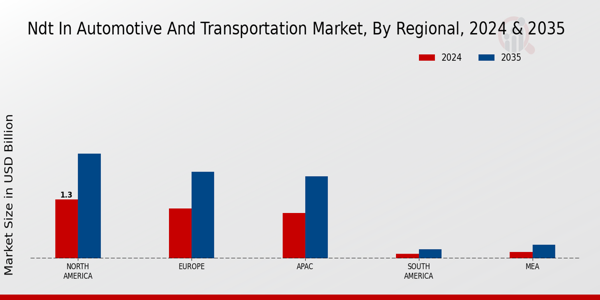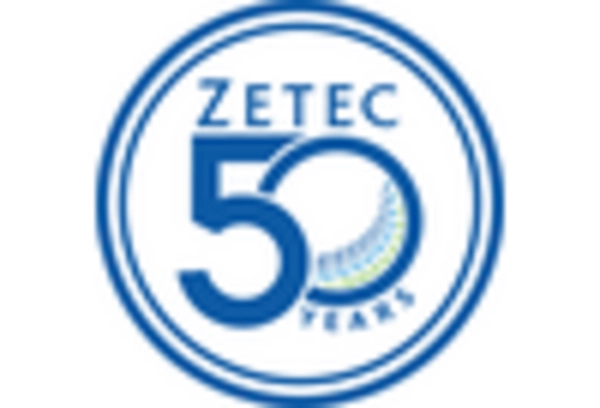Growing Demand for Electric Vehicles
The rise in electric vehicle (EV) production is a crucial driver for the NDT in Automotive and Transportation Market. As manufacturers ramp up their efforts to produce EVs, the need for reliable and efficient testing methods becomes paramount. NDT plays a vital role in ensuring the integrity of battery systems, structural components, and other critical elements of electric vehicles. The market for NDT services is expected to expand as companies seek to validate the safety and performance of their EV offerings. Additionally, the increasing focus on battery recycling and reuse further emphasizes the importance of NDT in assessing the condition of used components, thereby supporting the circular economy within the automotive sector.
Integration of Advanced Technologies
The NDT in Automotive and Transportation Market is experiencing a notable shift due to the integration of advanced technologies such as artificial intelligence, machine learning, and automation. These technologies enhance the efficiency and accuracy of non-destructive testing methods, allowing for real-time data analysis and improved decision-making processes. As manufacturers increasingly adopt these innovations, the demand for sophisticated NDT solutions is expected to rise. For instance, the use of drones equipped with NDT capabilities is becoming more prevalent, enabling inspections in hard-to-reach areas. This trend not only reduces inspection time but also minimizes the risk of human error, thereby improving overall safety and reliability in the automotive and transportation sectors.
Sustainability and Lifecycle Management
Sustainability is becoming a pivotal driver in the NDT in Automotive and Transportation Market, as companies increasingly focus on lifecycle management and environmental impact. Non-destructive testing methods contribute to sustainability by enabling the assessment of materials and components without causing damage, thus extending their lifespan. This approach aligns with the growing emphasis on reducing waste and promoting recycling within the automotive and transportation sectors. Furthermore, the adoption of NDT technologies can lead to significant cost savings by minimizing the need for replacements and repairs. As organizations strive to meet sustainability goals, the demand for NDT solutions that support eco-friendly practices is likely to increase, shaping the future of the industry.
Regulatory Compliance and Safety Standards
The NDT in Automotive and Transportation Market is significantly influenced by stringent regulatory compliance and safety standards imposed by various governing bodies. These regulations mandate regular inspections and testing of vehicles and transportation infrastructure to ensure safety and reliability. As a result, companies are compelled to invest in advanced NDT technologies to meet these requirements. The market for NDT services is projected to grow as organizations seek to comply with evolving standards, such as those set by the International Organization for Standardization (ISO) and the American Society for Testing and Materials (ASTM). This compliance not only enhances safety but also fosters consumer trust, thereby driving the demand for NDT solutions in the automotive and transportation sectors.
Rising Investment in Infrastructure Development
Investment in infrastructure development is a significant driver for the NDT in Automotive and Transportation Market. Governments and private entities are allocating substantial resources to enhance transportation networks, including roads, bridges, and railways. This investment necessitates rigorous inspection and maintenance protocols to ensure safety and longevity. NDT methods are essential for evaluating the condition of existing infrastructure and identifying potential issues before they escalate. As infrastructure projects continue to grow, the demand for NDT services is likely to increase, providing opportunities for companies specializing in non-destructive testing. This trend not only supports the safety of transportation systems but also contributes to economic growth and development.


















Leave a Comment